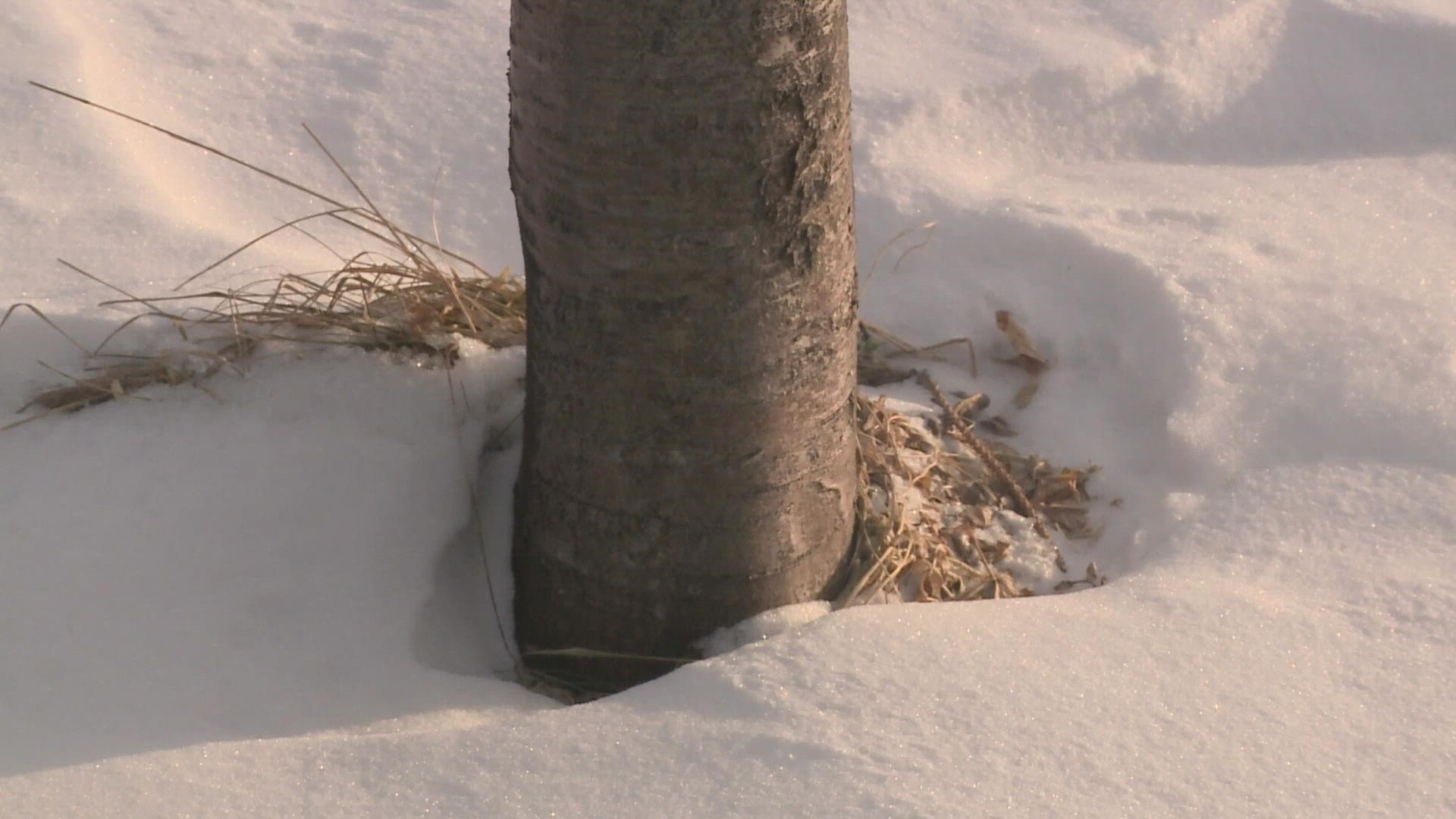DRESDEN, Maine — On a chilly January morning, Goran Johansen brushes away the snow over a plant in his family’s 2 1/2-acre strawberry field.
It doesn’t take long.
With only a few inches of snow on the fields of Goranson Farm, he quickly uncovers the foot of straw covering the plant.
“We try to shoot for about a foot plus of mulch over the crown of the strawberry,” he said, straightening up.
The winter in this part of Maine had been relatively snowless until a brief storm earlier in the week dropped about two inches, far from enough to provide the winter snow cover the plants need.
“Waking up when it’s [minus] nine degrees in the morning, and we don’t have much snow, that’s when we start getting worried about damage to the crown,” he said.
Strawberry plants, he said, need straw and snow to insulate them from the bitter January cold.
At Highmoor Farm in Monmouth, Prof. David Handley agreed. He is the University of Maine’s Cooperative Extension small fruit specialist. Farmers who raise strawberries, high bush blueberries, grapes, and other crops turn to him for help and advice.
He said snow matters because it’s an excellent insulator.
“Though temperatures can be well below zero above that snow line, just a few inches beneath it, they are hovering around freezing, or just a few degrees less, temperatures the plants can tolerate,” Handley said.
As much as many humans may dread the snow, he said it’s essential for the survival of many plants people need. And when there is little snow and a lot of cold, plants and their crops will suffer.
Highmoor Farm is farther inland than the Goranson Farm and has had more snow. Handley walked through six to eight inches to show a young high bush blueberry plant sticking above the snow.
“At this tender age, it still has a small root system right near the soil surface. So if we didn’t have this snow cover or mulch, with temperatures like last night, that soil would start to freeze and thaw. We could see real damage,” Handley said.
Many varieties of plants, he said, need that insulating layer of snow. But the once-dependable Maine winters have become inconsistent in recent years, especially near the coast.
Handley and state horticulturist Gary Fish said it’s an aspect of climate change, which makes weather patterns less predictable.
From farms to landscape gardens, it’s a concern.
“That lack of snow has probably caused some problems already,” Fish said. “Because once you get below maybe 10 or 11 degrees, that’s when you start to have problems with some buds on flowers.”
He said the problems are most likely when the cold continues for days or even weeks.
Handley said even massive maple trees depend on having snow covering their roots to help ensure a good sap run. Maple producers have struggled the last several years because of inconsistent temperatures and snow cover.
When asked about the forecast for significant snow this weekend, Handley smiled.
“It’s a pain in the neck for a couple of days cleaning up, but from a plant perspective, it’s just what we want going into February and March,” Handley said.
And then, of course, hoping the snow will last.

